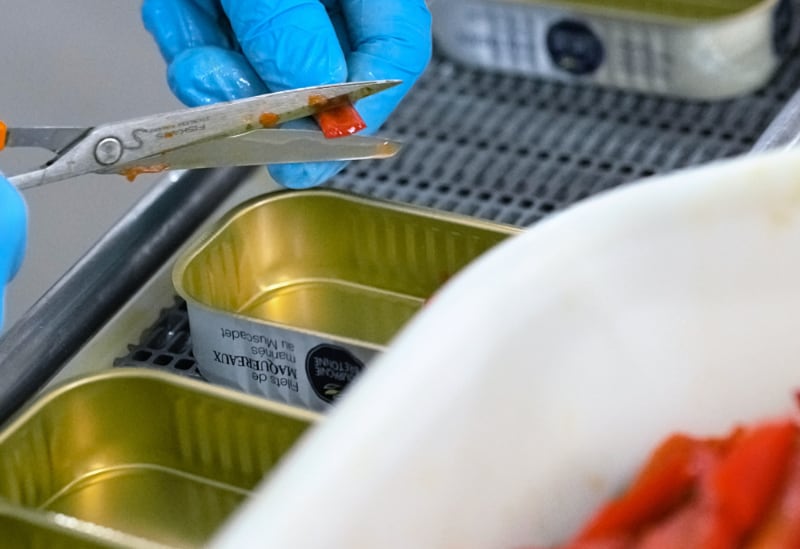
(Almost) everything about mackerel
Philippe CausseMackerel is a classic among traditional Breton and Portuguese preserves.
A zebra-striped blue fish, mackerel has a tender flesh that is kept in the cans until opened, where it reveals all its richness.
The mackerel from our suppliers are prepared by hand and thus retain their delicacy. They retain their nutrients, especially omega-3 fatty acids, which contribute to a healthy cardiovascular system... A healthy fish, then!
A can of mackerel is sometimes neglected in favor of sardines, despite offering just as many flavors and cooking options. Easy to carry in the tin, it's perfect for a quick lunch or an impromptu summer aperitif.
The mackerel - good for body and soul
Our mackerel are caught by a trawl. It is a device that works in "open water". With the help of an echo sounder, the fishermen recognize the position of the schools of fish and drag the trawl to the desired depth. The trawl never touches the seabed.

The mackerel is a shoal fish that lives in huge, very compact schools. Distinguished by its slender body, varied and iridescent colors with blue back, green zebra pattern, pearly white belly and white sides, mackerel lives on the continental shelf from the surface to 200 m depth. As a migratory fish, its habitat extends from Galicia to the Norwegian coast. It migrates through the Bay of Biscay, the Celtic Sea, the English Channel, the North Sea, the waters of St George's Canal and western Ireland.
It is one of the main products of the fish cannery, in fillets, marinated, in escabèche, in tomato sauce or even in rillettes. Mackerel is a fish with a distinctive, distinctive flavor and firm flesh, making it easy to prepare.
Big catches start in Europe in August in the Norwegian Sea, early September in the English Channel and in January, February and March around Scotland, Ireland and the Celtic Sea between Brittany and the south coast of Ireland.
Our suppliers' mackerel are fished in the Celtic Sea around Scotland and Ireland and landed in Dingle or Killybegs Harbour.
Dingle Harbor is something like the heart of the city! He is the reason that the rest of the village can live from tourism, fishing and the local gastronomy! Dingle Harbor is first visited for its charm, its atmosphere, the constant coming and going of fishing boats...

Killybegs Harbor is the county's and Ireland's largest fishing port. It is on the south coast of the county, north of Donegal Bay, near Donegal town. Killybegs is a natural deep sea harbor with a massive 12 meter tidal range.

Know-how, filleting, canning
The decapitated and gutted mackerel are washed and placed in shallow grills to cook. The mackerel are cooked in a court bouillon prepared with a bouquet garni, onions and carrots at a precise temperature and duration. Once the mackerel have cooled, they are filleted with scissors and nested by hand by the experienced and skilled staff at our cannery.
Trimming the mackerel is a skill that takes workers 3 to 6 months of training and practice to get "clean fillets and nice cans". The garnishing completes the making of our recipe for mackerel fillets marinated with muscadet and tomatoes: they are carefully placed by hand in each can of mackerel. The lemon slice, the pickle slice, the little bit of chilli and finally the peppercorn intertwine their flavors to give our recipe all its character.

The finishing touch:
The sauces are made by the same workers during canning and poured over the fillets before sealing.
